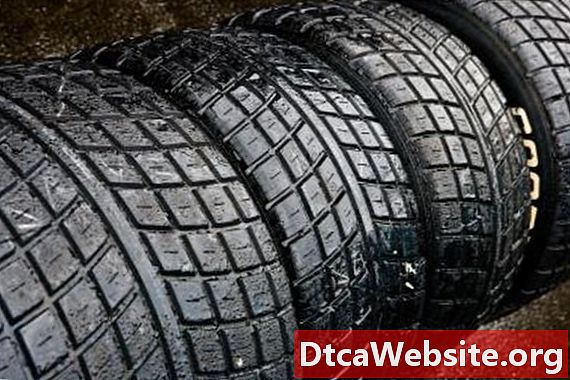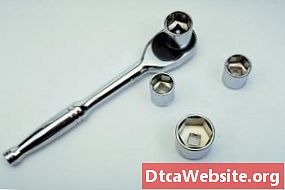
Contenu

When considering replacement tires for your car, there are many options available. Cooper tires, like other brands, are sized and rated according to several factors. Your best option is to retain the original tire rating and size for your vehicle. When shopping for new tires, its useful to know the universal tire code used to describe Cooper and other brand tires.
Step 1
Check the tire sidewall for the tire size and type. The description will begin with the letter P (passenger cars) or LT (light trucks), tires designed to carry heavier loads under tougher conditions.
Step 2
Check the width of the tire, given in millimeters. Following the width is a slash and the number indicating the tires aspect ratio, which is the height of the sidewall (tire only, without wheel or hubcab) in proportion to the width. An aspect ratio of 75 means the tire height is 75% of its width. The lower the aspect ratio number, the shorter the sidewalls and the better the handling of the vehicle. A higher aspect ratio means the tire is proportionally higher and delivers a smoother ride.
Step 3
Next check the letter following the aspect ratio number. This letter indicates the tires construction type. R indicates radial construction, while D (diagonal) or B (belted) indicates a bias tire.
Step 4
Check the number following the construction type designation. This is the wheel size number, showing the distance across the interior hole of the tire. The wheel diameter of your vehicle must match this number. Never attempt to mount a tire with the wrong wheel size.
The final indicator is what Cooper Tires calls the "Service Description." This consists of a load index and a speed symbol. The load index shows the carrying capacity of the tire, which should be equal to or greater than that of the original tires on the vehicle. The letter showing the speed symbol shows the maximum recommended speed for a vehicle mounted with this tire: S 180 km/h (112 mph) T 190 km/h (118 mph) U 200 km/h (124 mph) H 210 km/h (130 mph) V 240 km/h (149 mph) W 270 km/h (168 mph) Y 300 km/h (186 mph)
Tips
- The ratings for load index numbers are easily available on the Internet.
- Your tires recommended inflation pressure is indicated on the interior door panel; you can also consult your owners manual.


